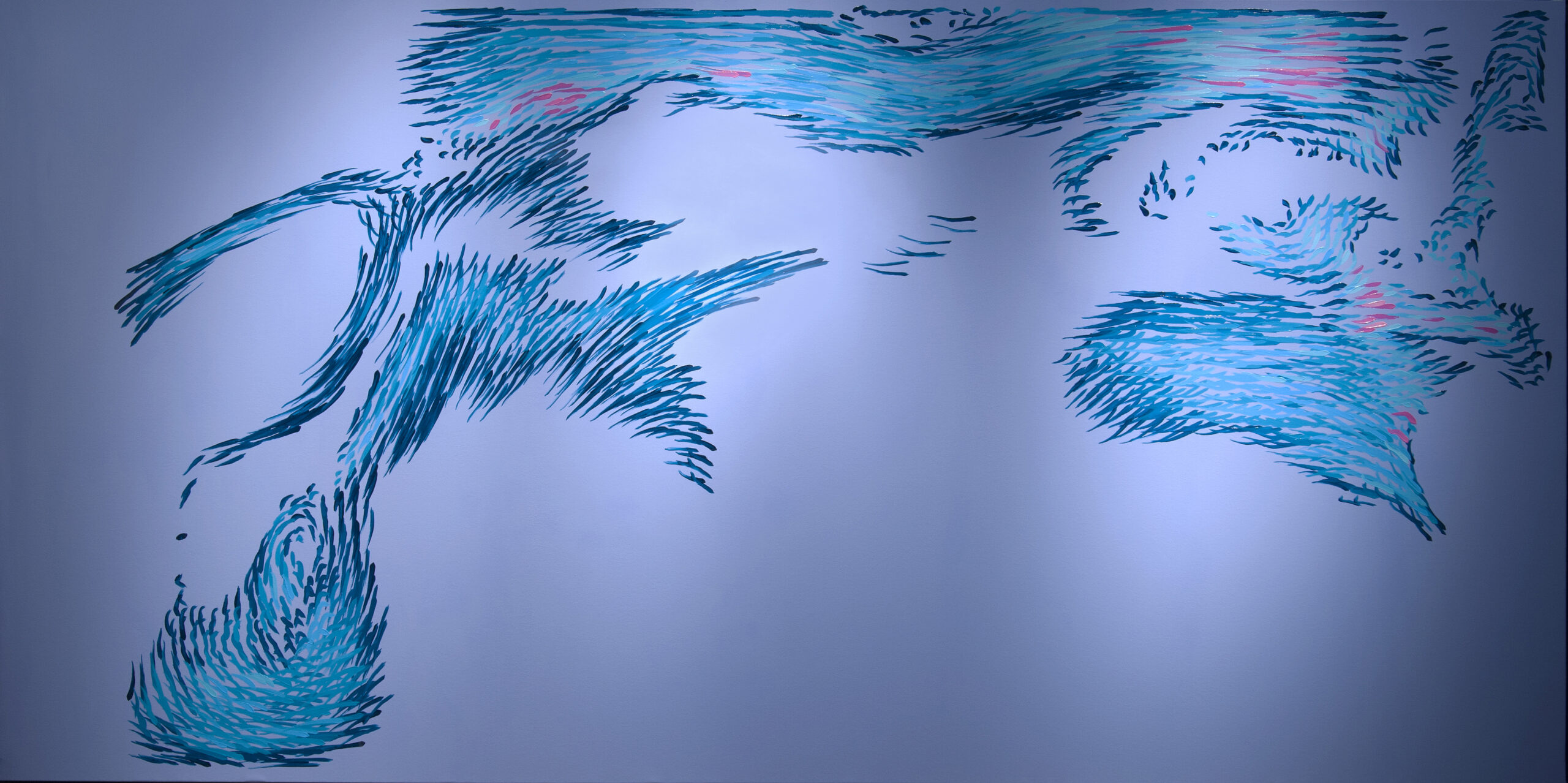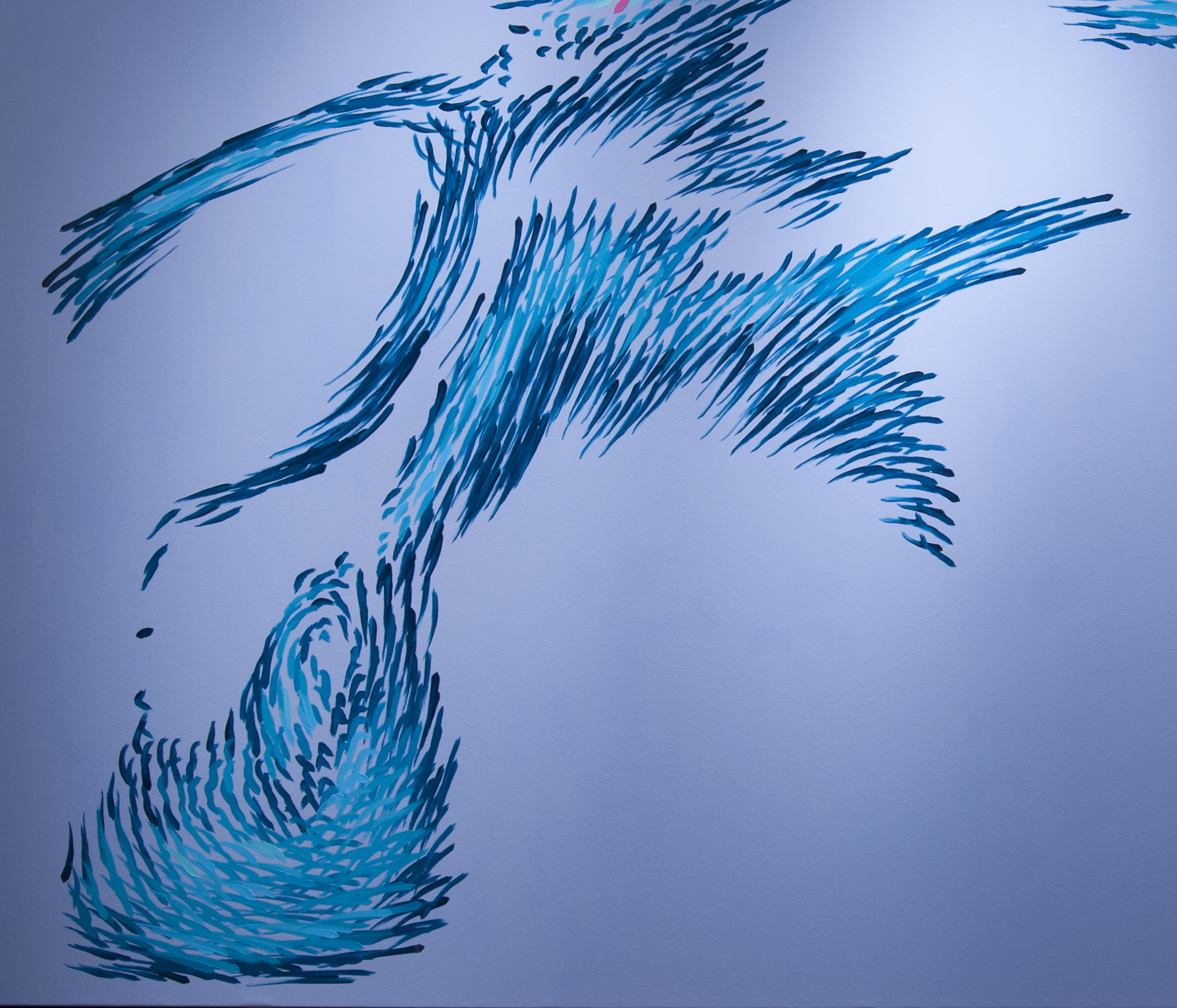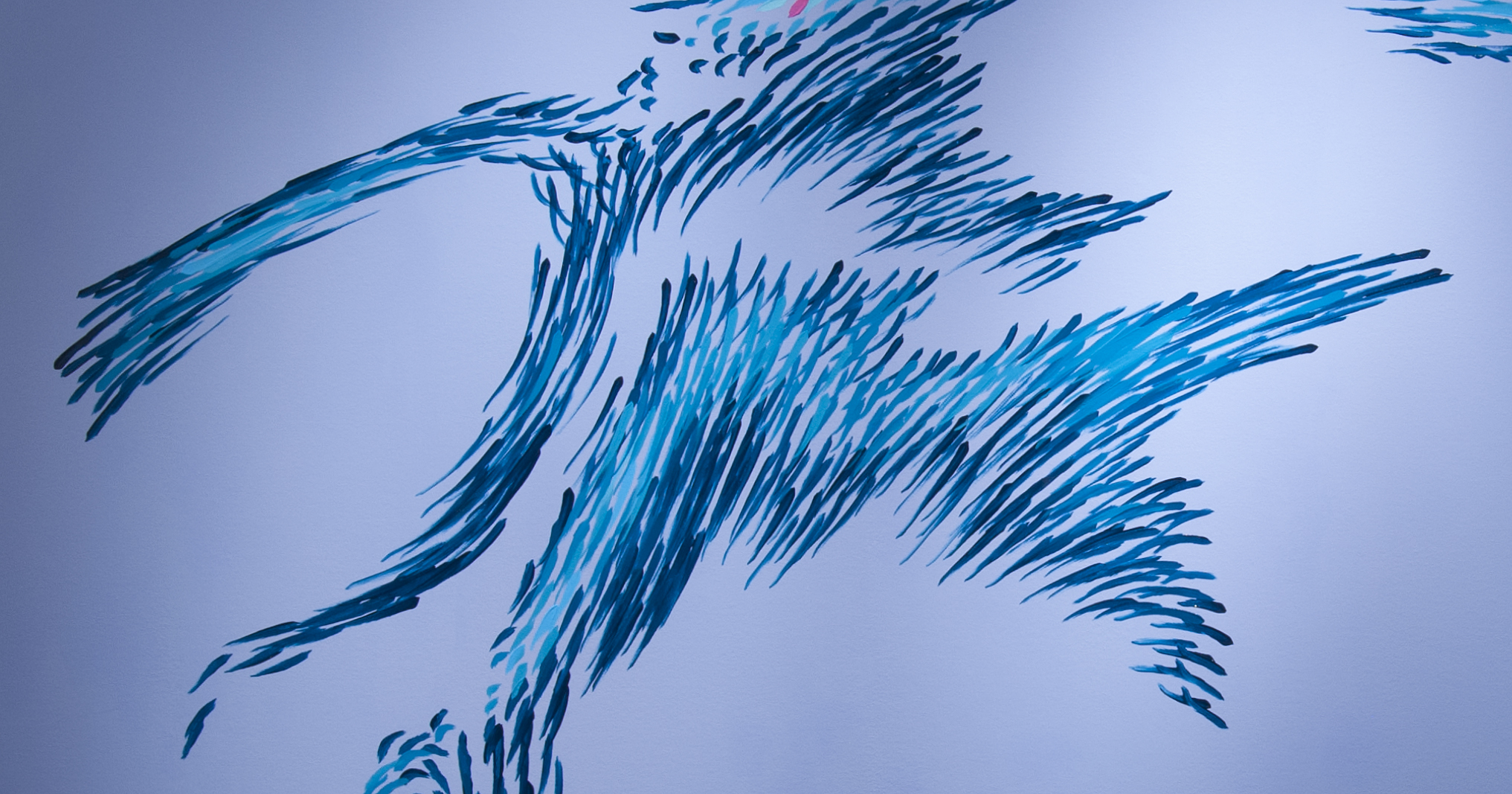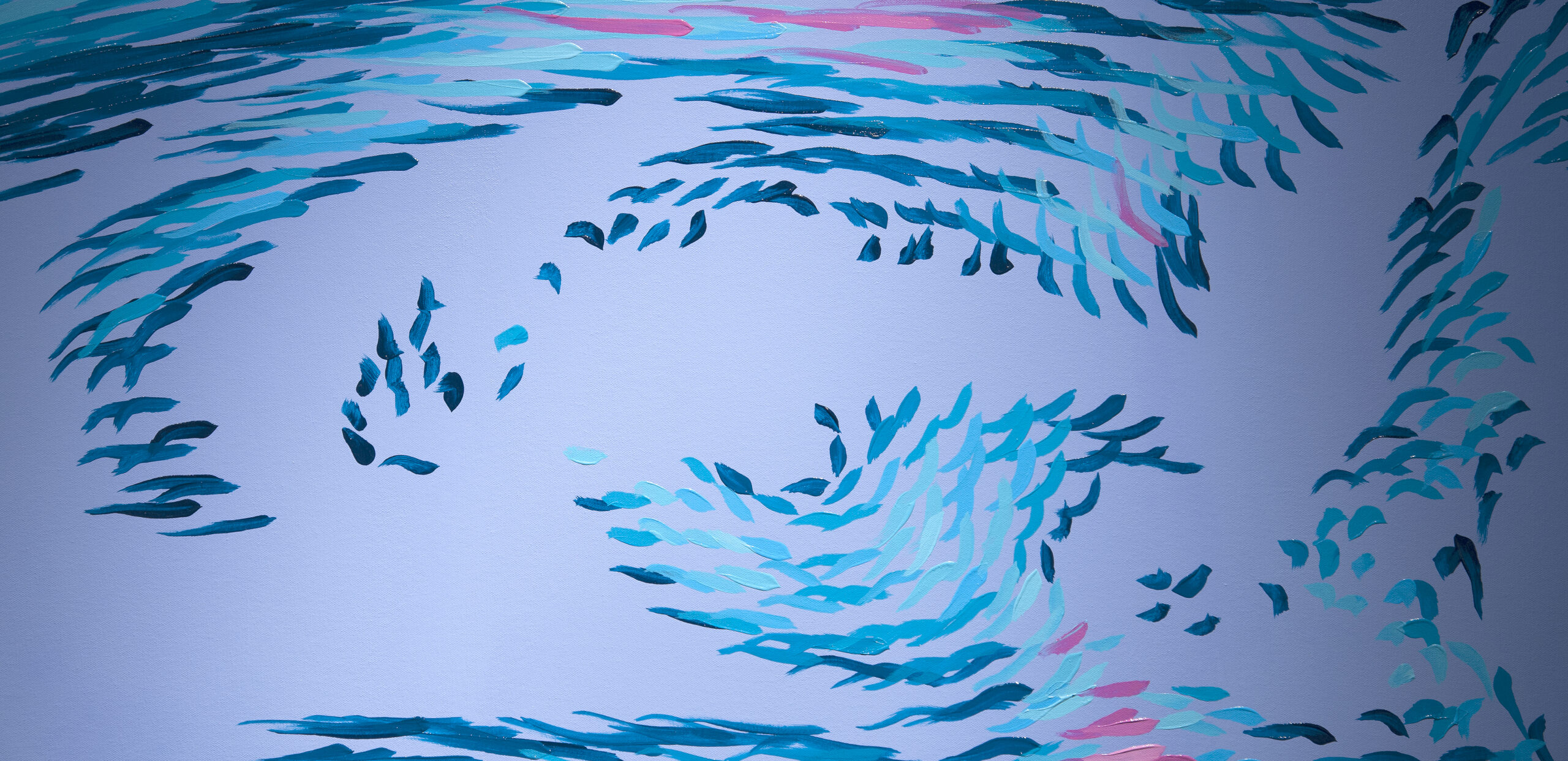Large Fluid Dynamics Painting
2015
70” x 140”
Brushstrokes: 2,861

View in Gallery
The complex robotic work cell of Dulcinea evolved to meet the needs for this enormous painting, which still had to be completed in six individual sections. The resulting image is a field of vibrant movement pulling the viewer into the directional brushstrokes and contemplative swaths of negative space.

Artistic Goal
How do you get a viewer physically engaged, an active participant? One way is with visual movement across a large expanse of canvas. The eye will follow directional brushwork and dwell upon smaller areas of detail. Large swaths of negative space (where there are no brushstrokes) will enhance this flowing, overall effect.
This entailed challenging Dulcinea to make a painting taller and wider than she was originally created for, and even larger than what he could paint in fourths by shifting the canvas, as had been done in previous paintings.

Cappuccino Influences
This painting is similar in style, color, and composition to some of Paul’s previous work with Dulcinea, most notably, 2013’s Cappuccino Fluid Dynamic. Virtual fluid dynamic simulations — featuring multiple fluid injector nozzles pumping into an empty chamber — helped form the brushstroke layout Dulcinea would use for the finished painting.
Learn More: Explore the process behind the fluid dynamics simulations.

A Big Canvas Leaves a Big Impression
How does a painter get their audience physically engaged and make them active participants in viewing the work? One way is with visual movement across a large expanse of canvas. The eye is made to follow directional brushwork, dwelling upon smaller areas of great detail. Large swaths of negative space enhance this effect. The final painting, when viewed at full size in its natural environment, captivates all who stand in front of it with its scale and swirling composition of beautifully colored brushstrokes.
Producing a painting of this scope challenged Paul and Dulcinea to make a final product taller and wider than the robot was originally created for, and even larger than what could be painted in fourths by shifting the canvas (as had been done in previous paintings). Working in six sections of canvas, all joined together afterward, allowed Dulcinea to complete this stunning, wall-sized work of art.